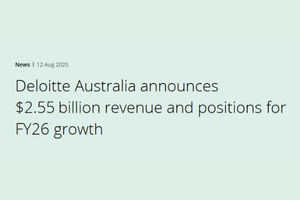Digital Transformation Insights with Hitachi Vantara
CTO Attaches Meaning to Survey Findings with Examination of the Data-Centric Approach
Just a few years ago, the term digital transformation was little more than a concept — a nebulous ideal that had little basis in reality for the day-to-day business. We’d heard of digital disruptors, and were aware of a few famous examples of new business models that were transforming entire industries. For the most part, though, large companies stayed the course. A global enterprise isn’t a start-up, after all, and it is only natural that it might take a little longer to appreciate that what’s been proven highly successful won’t necessarily continue. Especially when past success can be attributed in part to a legacy infrastructure of customized mission-critical systems that run effective business processes.
Fast-forward to today, and it’s clear that digital transformation is now an imperative. Emerging technologies are a big reason; companies are using machine learning, AI, and IoT to reinvent business models and better serve their customers. Another reason is a general acceptance that data is the new currency that drives a business’s profits. Capturing an increasing volume of data from an increasing number of sources and turning it into new insight to transform business models and processes is at the very heart of a digital transformation. With a data strategy that changes how you sell a product to align with the expectations of the customer, an organization is on track to becoming a true digital enterprise.
To learn more about where SAP customers are in their digital transformation journeys, SAPinsider partnered with Hitachi Vantara to explore digital transformation from the enterprise perspective. We surveyed SAP customers with at least $1 billion in annual revenue to find out more about their digital objectives, challenges, and purpose for moving to a digital platform. In the survey, customers revealed which technology trends will increase their ability to be more competitive, the business outcomes they’re looking to achieve with big data and analytics solutions, and the challenges to modernizing their legacy applications.
Explore related questions
Key findings from the survey are outlined in a full report, “Seizing the Digital Advantage: Where SAP Customers Are in Forging a Path to Transformation.” A few stood out:
- Nearly half of all respondents (44%) reported that they will implement SAP S/4HANA business suite in the next year
- Asked to identify strategic business opportunities in the coming years, the majority of respondents cited reduced operating expense (69%) and increased customer satisfaction (62%)
- The business outcomes respondents are looking to achieve with big data and analytics solutions include operational efficiencies (69%), cost reduction (65%), and an improved customer experience (57%)
While the report paints a fuller picture of what a digital journey means for the SAP customer, one key theme emerged: Customers who took part in the survey appear to be all-in with migrating to the cloud and developing data strategies to align with a data-centric approach. To expand on the findings, SAPinsider interviewed Hitachi Vantara Chief Technology Officer Paul Lewis for an expert take on what these customers and other companies will face in their digital transformation journeys. What fundamental changes must the enterprise make to compete against the digital disruptors? What are the key components of a data strategy for a digital transformation? How should an enterprise think differently about data and what a data-centric approach means for a data center? Why is SAP S/4HANA such a foundational component of a digital platform?
In an exclusive Q&A, as well as a video interview shot at Hitachi Vantara’s New York office, Lewis shed light on the meaning of a modern, digital transformation, explained the tremendous implications such a transformation has on infrastructure, and provided a step-by-step guide for how to become a true digital enterprise. “To move into that data-modernization state into your digital transformation, one needs to be data-centric instead of application-centric,” he said, “And in order to be data-centric you need a data strategy for digital transformation. What we really mean is this: You need to have four big data capabilities.”
Data Centricity and a Modern Digital Transformation: Paul Lewis, Chief Technology Officer at Hitachi Vantara, defines what a successful data strategy for digital transformation looks like, shares the steps to take to get there, outlines the goals for digitizing the enterprise, and discusses the trend toward verticalization.
Seizing the Digital Advantage: Hitachi Vantara commissioned an insiderRESEARCH survey of existing SAP customers with at least $1 billion in annual revenue. This research paper explores the considerations customers face in integrating complex IT infrastructures with new data sources and technologies to leverage digital trends.







